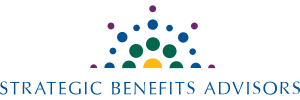The SECURE Act is the most sweeping retirement plan legislation passed in over a decade. Some of its provisions apply to corporate plan sponsors, while others encourage smaller employers to offer retirement plans or apply only to individuals or special situations. Most changes are effective beginning in 2020, but others apply in future years. Certain steps need to be taken immediately, while others can be deferred. Given the SECURE Act’s broad scope and nuanced provisions, how should plan sponsors prioritize their responsibilities under the new law? This article suggests a systematic approach to understanding the opportunities the Act offers to both organizations and employees and developing a plan of action.
Do your homework.
Plan sponsors should familiarize themselves with the law’s key provisions, at least at a high level, to determine which ones may impact them. Companies that sponsor retirement plans will want to focus on the provisions impacting their defined contribution (DC) plans and, if offered, defined benefit (DB) plans. Additionally, provisions of the Act that affect individuals will be of interest to all employees and may need to be incorporated into plan sponsors’ financial wellness programs.
Here is a helpful summary of the Act’s key provisions.
Get ahead of employee questions.
There has been a lot of press about the impact of the SECURE Act on individuals, which may lead current and former employees to ask questions such as:
- Can I make a withdrawal from my 401(k) plan to help pay for my child’s birth or adoption?
- Do I have to take my retirement plan benefit at age 70 ½ or at age 72?
- I am a long-term part-time employee. Am I eligible to join the 401(k) plan now?
- Can I continue contributing to my 401(k) if I am still working after age 70 ½ (or after age 72)?
- Are my 401(k) contributions going to automatically increase from 10% to 15% of pay?
- How will my 401(k) balance be paid to my non-spouse beneficiary if I die?
- Should I change my 401(k) plan beneficiary?
- I am over age 70 ½. Should I start contributing to an IRA instead of, or in addition to, my 401(k)?
- Should I contribute more money to a 529 savings plan to help repay my child’s student loans?
Employers should develop FAQs designed to answer common questions, communicate that the company is evaluating the law’s impacts and inform employees of when they will receive more information. Proactively communicating about the Act will relieve HR and benefits center personnel from having to respond to numerous individual questions.
Engage with your plan administrators.
The Act requires changes in DB and DC plan administration that must be implemented this year. Changing the minimum distribution age from 70 ½ to 72 will affect DB and DC plan administration for both participants and survivors of deceased participants. DC plans may have to be updated to limit non-spouse beneficiary distributions, prohibit extending loans to participants via credit cards and possibly to permit penalty-free withdrawals for childbirth- or adoption-related expenses. Plan sponsors will have to provide disclosures calculating DC plan account balances as an annuity once the DOL issues further guidance.
Third-party administrators are currently evaluating the new law and its impact on their clients. Plan sponsors will want to engage with plan administrators to understand the options available for complying with the new rules, make necessary decisions and develop an implementation plan, being sure to bring all relevant internal stakeholders to the table.
SECURE Act changes aimed toward helping individuals save more for retirement may prompt employees to reevaluate their retirement and estate planning strategies. Employers who offer financial wellness programs will want to engage their administrator to develop a plan for updating, reviewing and rolling out employee communications and education programs reflecting the provisions of the Act. Some communications may be targeted specifically to older workers, and plan-specific issues may also need to be addressed.
Assemble a team to review plan design options.
The SECURE Act opens up new plan design options. For example, sponsors may decide to close their DB plans to new participants or postpone freezing their closed DB plans as a result of the broad nondiscrimination testing relief the Act provides for these plans. There are many new provisions in the law for DC plans generally and safe harbor 401(k) plans specifically, creating an opportunity for sponsors to consider whether current plan designs can be changed to achieve better outcomes. These strategic decisions may involve a broad group of stakeholders within the organization, including HR, Finance, Tax & Accounting, Treasury and Legal, who should consider questions such as:
- Is our safe harbor 401(k) plan affected by the new options under the SECURE Act?
- Should we make changes to our safe harbor plan design?
- Should we adopt a safe harbor plan, either now or in the future?
- Do we want to explore offering annuities in our 401(k) plan, either now or in the future?
- Do we have long-term part-time employees who may become eligible for our 401(k) plan?
Develop a compliance strategy.
The Secure Act adds some compliance requirements and simplifies or reduces others. Plan sponsors will need to amend plan documents, SPDs and related communications to comply with the Act and to implement any desired plan changes. For the most part, plan compliance strategies can be developed after sponsors complete their initial evaluation of options under the Act and have made some decisions. Developing and executing the compliance strategy will likely include parties from HR and Legal as well as third-party administrators.
There is no “one size fits all” response to the new law, as each organization’s needs are different, but a systematic approach will make it easier to understand your responsibilities and prioritize next steps. Consulting with a benefits advisor who works with many organizations can also offer valuable perspective on how to navigate SECURE Act issues and achieve optimal outcomes for your company and its employees.

